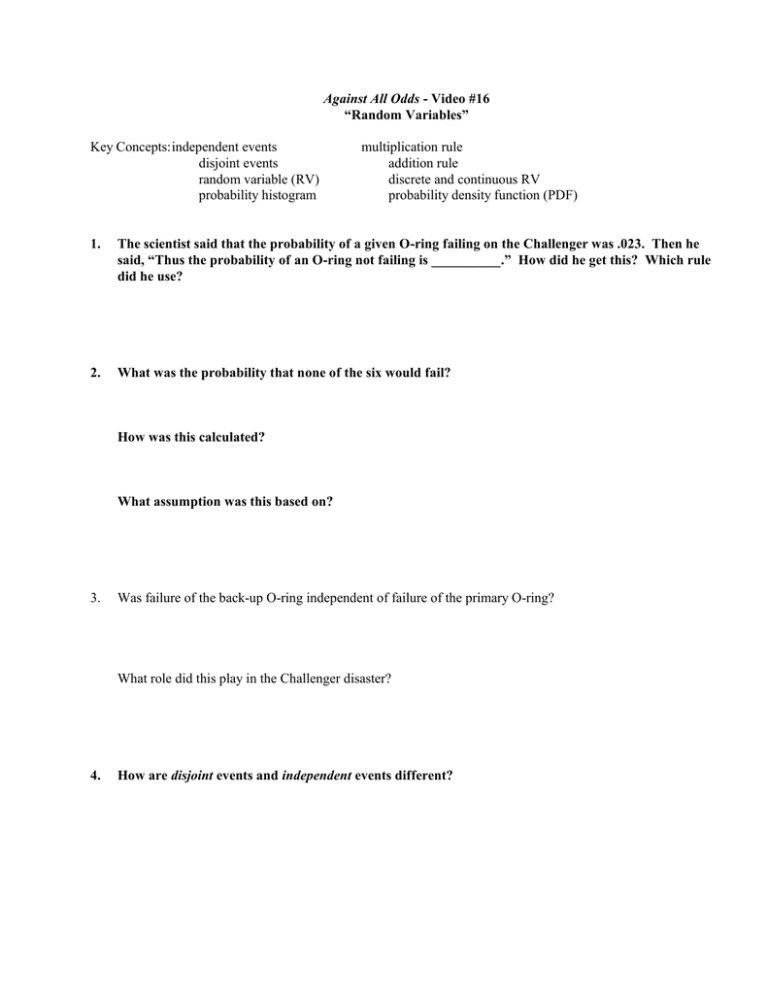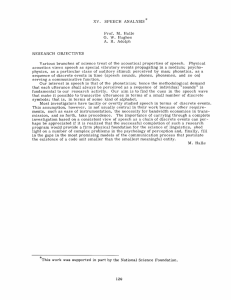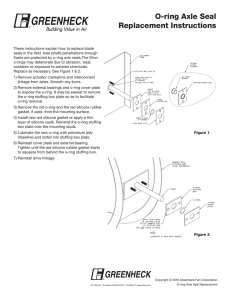#16 - Random Variables
advertisement

Against All Odds - Video #16 “Random Variables” Key Concepts: independent events disjoint events random variable (RV) probability histogram multiplication rule addition rule discrete and continuous RV probability density function (PDF) 1. The scientist said that the probability of a given O-ring failing on the Challenger was .023. Then he said, “Thus the probability of an O-ring not failing is __________.” How did he get this? Which rule did he use? 2. What was the probability that none of the six would fail? How was this calculated? What assumption was this based on? 3. Was failure of the back-up O-ring independent of failure of the primary O-ring? What role did this play in the Challenger disaster? 4. How are disjoint events and independent events different? 5. What is a random variable? 6. What is the difference between a discrete random variable and a continuous random variable? 7. 8. 9. a. discrete - b. continuous - Are the following quantities discrete or continuous? a. number of points scored in a game b. lifetime of a human cell c. number of people waiting in a check-out line d. depth of a snowfall e. failure time of a mechanical part How are discrete and continuous random variables represented graphically? a. discrete - b. continuous - What are the formulas for the mean (or “expected value”) and the standard deviation of a discrete RV? a. mean µX = b. std. deviation σX = 10. What is the definition of expected value?




